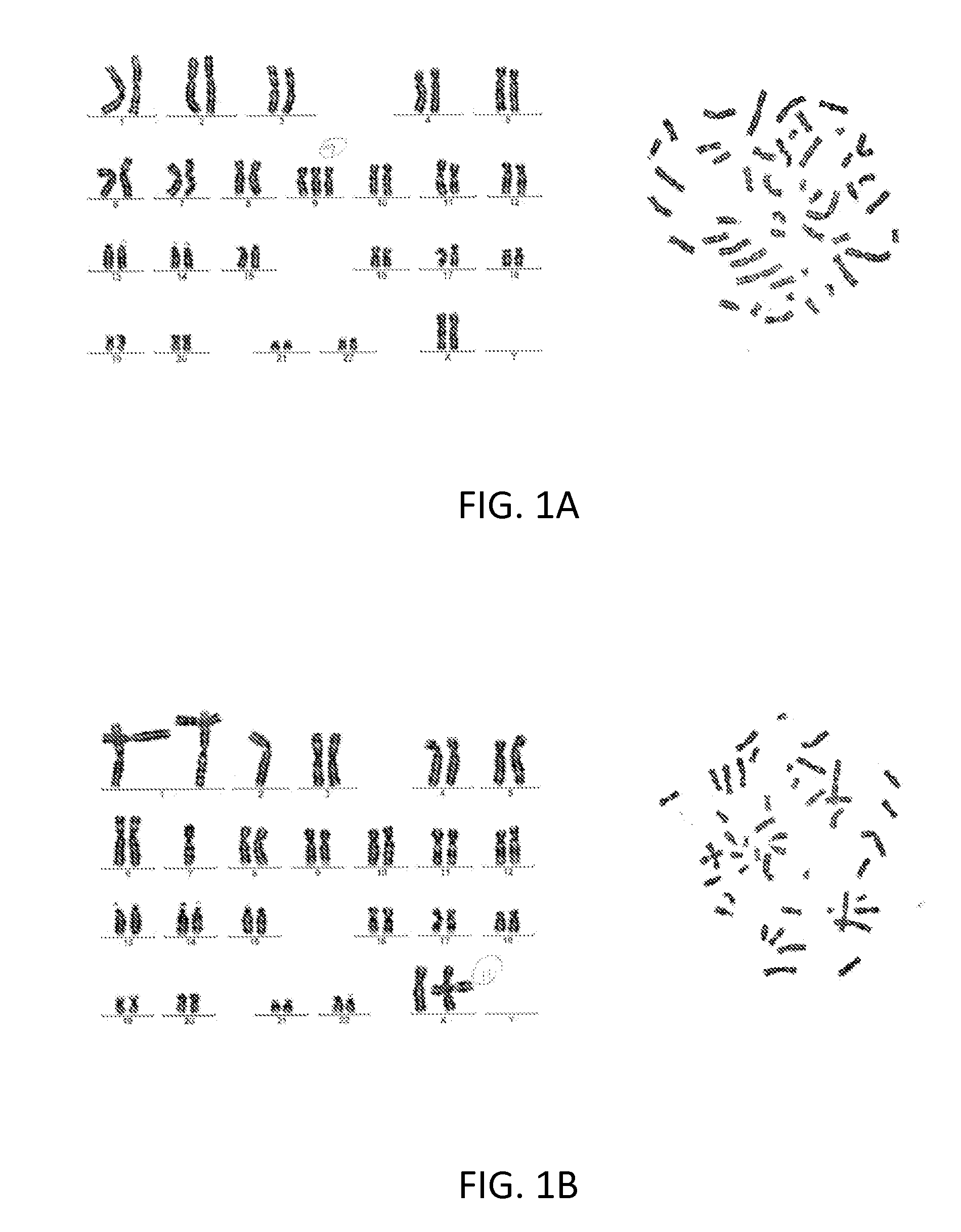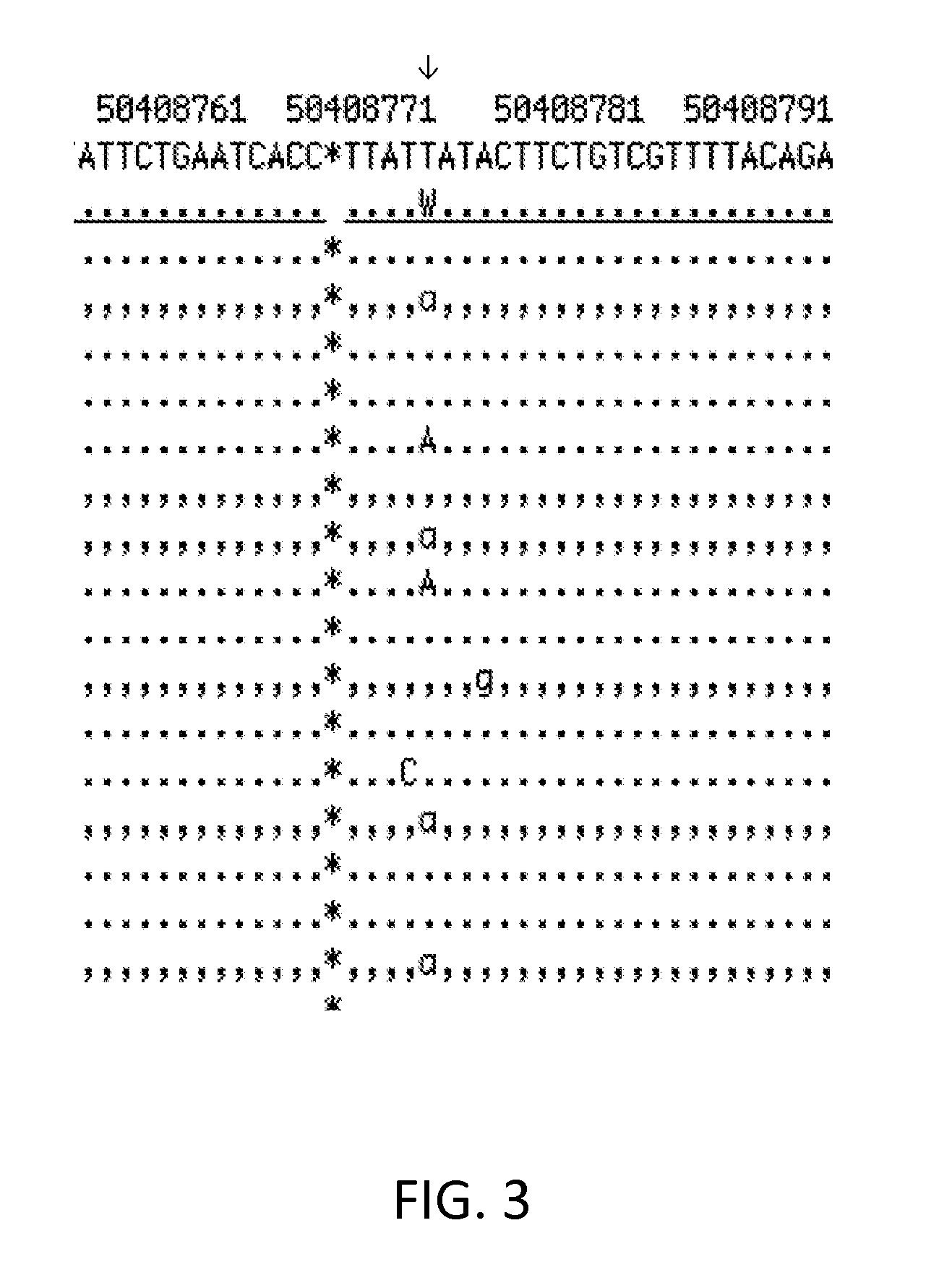Systems and methods for diagnosing a predisposition to colon cancer
a predisposition and colon cancer technology, applied in the field of cancer diagnostics, can solve problems such as receiving potentially life-saving colon examinations
- Summary
- Abstract
- Description
- Claims
- Application Information
AI Technical Summary
Benefits of technology
Problems solved by technology
Method used
Image
Examples
example 1
Identification of Sequence Alterations Relevant to Colon Cancer Predisposition
[0089]It is believed that dysfunction of genes that maintain genome stability underlies a substantial fraction of familial colorectal carcinoma (FCRC). Based on this hypothesis, preliminary studies utilized colorectal carcinoma (CRC) patients in an in-house Gastrointestinal Cancer Risk Assessment Program who met the following criteria: (1) they developed CRC before the age of 50 and / or had a first degree relative with colon cancer and, (2) had tested negative for Lynch Syndrome / Hereditary Non-Polyposis Colorectal Cancer (HNPCC) by standard tests of their tumor for microsatellite instability and / or immunohistochemistry for levels of mismatch repair proteins and tested negative for Familial Adenomatous Polyposis coli by having fewer than five polyps detected by colonoscopy. Many of these patients had clinical features atypical for MUTYH polyposis.
[0090]All patients in the Program had donated peripheral blood...
example 2
[0107]The studies described in Example 1 suggest that constitutional genomic instability is more widespread than currently recognized. It is believed that heterozygous mutations will be functionally important, due to haplo-insufficiency and / or dominant negative effects. Currently recognized FCRC syndromes are autosomal dominant at the organismic level, but are thought to be largely recessive at the cellular level. The following describes additional experiments to be undertaken.
[0108]Studies will evaluate whether the sequence variants of the ERCC6, WRN, TERT, and FAAP100 genes described in this specification inactivate the function of the proteins they encode. It is believed that dysfunction of genes that maintain genome stability underlies a substantial fraction of FCRC. These studies will proceed along the following basic outline: (1) Test whether the sequence variants inactivate protein function by (a) introducing the sequence variants into expression vectors by s...
example 3
FAAP100 S466L
[0145]An additional candidate disease-causing variant in patient 120713 was identified. To systematically analyze the list of gene variants derived from the exome sequencing results, Gene Ontology (GO) consortium databases were used to focus on variant genes associated with the terms DNA replication, DNA repair, checkpoint, mitosis, or mitotic. Thirty four variants in patient 118294 and 19 variants in patient 120713 were associated. Variants were identified that represented >40% of the sequencing reads (and were, therefore, likely to be at least heterozygous), absent from NHLBI SNP databases or present at frequencies <1 / 1000 (thereby reducing type 1 errors), and predicted by the PolyPhen2 program (Sunyaev, Harvard University) to be probably damaging to protein function. A few were excluded that appeared to not be directed related to CGI, on the basis of being expressed primarily outside the nucleus and / or in a severely restricted tissue pattern. From this analysis, pati...
PUM
 Login to View More
Login to View More Abstract
Description
Claims
Application Information
 Login to View More
Login to View More - R&D
- Intellectual Property
- Life Sciences
- Materials
- Tech Scout
- Unparalleled Data Quality
- Higher Quality Content
- 60% Fewer Hallucinations
Browse by: Latest US Patents, China's latest patents, Technical Efficacy Thesaurus, Application Domain, Technology Topic, Popular Technical Reports.
© 2025 PatSnap. All rights reserved.Legal|Privacy policy|Modern Slavery Act Transparency Statement|Sitemap|About US| Contact US: help@patsnap.com



